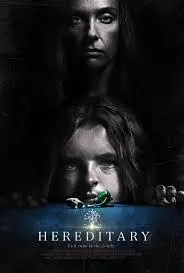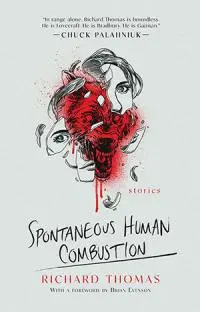I wrote a previous column about body, mind, and soul in 2020, and I’d like to expand on that, dissect a few things, to show you what I mean. So let’s dig in.
OVERVIEW
Basically, to revisit this (or just click the link above) body is grounding the story in action, being entertaining, getting readers to turn the page. Mind has to do with making the audience think, their minds turning over details, philosophies, and revelations, long after the story is over. And soul is of course the emotion, going deeper than just action, getting a reaction from your audience, moving them. So what does that look like?
IN FILM
I’m going to spoil a few movies here so if you haven’t seen these films, please skip the following paragraphs.
 Hereditary: The body is the family, the miniature models that are made, the weirdness in the house, the death of the grandmother, and what comes after it, the plot thickening, going deeper, getting weirder. The mind has to do with the cult and the actions, the ending and Paiman, the revelation of the truth, and the understanding that this has been going on for a long time. The soul is the way our protagonist reacts to the loss of her mother, and then later, her daughter—it’s intense, emotional, and sad. It’s visceral.
Hereditary: The body is the family, the miniature models that are made, the weirdness in the house, the death of the grandmother, and what comes after it, the plot thickening, going deeper, getting weirder. The mind has to do with the cult and the actions, the ending and Paiman, the revelation of the truth, and the understanding that this has been going on for a long time. The soul is the way our protagonist reacts to the loss of her mother, and then later, her daughter—it’s intense, emotional, and sad. It’s visceral.
Arrival: The body is all about the aliens, the ships landing, and the weird ways they communicate. The mind is dealing with the language, the concepts at play, that strange time element, and what the ending really means. It’s quite intense. And yet, hopeful? The soul is the truth behind the timelines here—not flashbacks, but flashforwards. Once we understand that the daughter and her sickness is not something that happened long ago, but is still coming? WOW. That just breaks my heart. I cry like a baby every time I see this film.
Inception: The body is the caper, the crimes they are committing, the action and dreams and heist aspects. The mind is all about the concept of invading dreams, planting an idea, the mental gymnastics we have to do to keep up with the plot and action. And then that spinning top at the end—does that top wobble? Is it real? Your call. The soul has to do with the wife, the children, the stakes at play, and what the ending means. That spinning top, the kids turning, a family united (if that’s the take you go with). It’s either heartbreaking or a homecoming we’ve been waiting for the entire movie.
IN MY WRITING
Since you all have probably read a few of my stories over the years, I thought I would break down a few of those as well.
“Twenty Reasons to Stay and One to Leave”: This is a story I’ve dissected here at LR already, so it should be familiar to you. The body of this story is that it’s a list story—and it takes some effort to dig in, to figure out what’s going on, and to add up the details. The mind is trying to decipher what exactly happened here, a tragedy for sure, the loss of a child, the end of a marriage. There are clues, but it’s elusive, and you might not get it all until the very last lines. The soul is all about the emotion not only in the death of a child, at the father’s hands (accident or not) but the realization in the denouement—the last few lines—going from loving her too much to leave, to loving his wife so much he has to leave, to accepting that he is one of those thousand cuts, making things worse, and that she’ll never heal (nor will he) if he doesn’t move on. It should be heartbreaking.
 Disintegration: In my second novel, the body is all about this unnamed protagonist who has lost everything, his wife and kids killed in a car accident, resigned to a Dexter kind of life, where he kills bad people. This is the only reason he can get out of the bed—seeking a balance in a world filled with chaos and injustice. The mind comes in when we get that full voicemail recording, and realize that things are not what they seem, and then of course the ending, where we see the family is still alive, and just fine. The soul comes through in his journey—detached and killing bad people; then putting a fellow assassin out of his misery; sparing the girl that he was going to beat and rape; finding his family and walking away as he realizes they are better off without him, not knowing that he’s alive. That should all add up over time.
Disintegration: In my second novel, the body is all about this unnamed protagonist who has lost everything, his wife and kids killed in a car accident, resigned to a Dexter kind of life, where he kills bad people. This is the only reason he can get out of the bed—seeking a balance in a world filled with chaos and injustice. The mind comes in when we get that full voicemail recording, and realize that things are not what they seem, and then of course the ending, where we see the family is still alive, and just fine. The soul comes through in his journey—detached and killing bad people; then putting a fellow assassin out of his misery; sparing the girl that he was going to beat and rape; finding his family and walking away as he realizes they are better off without him, not knowing that he’s alive. That should all add up over time.
“Ring of Fire”: This is the novella that ends my latest collection (Spontaneous Human Combustion, which was a Bram Stoker finalist!). This science fiction, horror story, set in an isolated “arctic” setting is not what it seems. The body is weaving together a man in a lab running tests and his desire to be closer to the only visitor he has (Rebecca), with a disembodied pair of voices, and a running list of items. Readers will be looking for clues, trying to figure out what’s going on with this all—loops, and test, and solitude. There is enough daily mendacity and repetition that it should hold the reader’s attention, and make them ask questions. Mentally, as you start to figure this out, the reader will wonder what is true and what is false, what’s really going on here, who (or what) is Rebecca, really, and what did that whole thing about the monkeys mean? The soul comes into the end of this as we switch perspectives, over to Rebecca (who is actually a robot/AI), in order to see if this spontaneous human evolution has actually happened, via a collective unconscious (or subconscious). Men are responsible for most of the violence, gun deaths, rape, and war in the world. Did all of the hard work here in this prison, this lab, actually work? What I’m suggesting is that it did. That hope, that concept, should blow your mind. And if you care about the characters, about all of this, then it should really resonate.
IN CONCLUSION
When you sit down to write a story, you have to start someplace, right? In addition to all of the exposition, the inciting incident, the narrative hooks that we use to kick things off, we have to ground it in reality, build the world, and engage with the reader. The first step is to tell an entertaining story, that holds a reader’s attention, and keeps them turning the page. They have to understand the basic concept, be able to see the world, and to embrace the genre, as well as the characters. The second step is to get them to care—by going deeper into the characters, with a plot that has twists and turns, surprises and revelations along the way, making us feel things: love, hope, fear, anxiety, sorrow, and grief, for example. The third step is have a climax (and resolution) that makes us stop in our tracks, unable to look away, as the denouement unfolds—what has happened here, what is the truth, and why does it matter? While there are three stages, three layers, three tiers here, we do them all at the same time, building the world as we add depth of character and emotion, complexity of plot.
I started out writing basic stories that just tried to do all of the Freytag stuff in a way that worked. I had to understand the genre I was writing, develop the characters so that we care, and then find some originality to keep it from being cliché. Those early stories were fine, they were good, but it took me years to learn how to create something more. It took time for me to learn how to emotionally move people, to manipulate the reader, to play one emotion against another. As I was able to add more balls to the storytelling I was juggling, I sought out more complex narratives, with layers, and multiple themes, and bigger twists. In fact, over the last couple of years I’ve actually bounced some of my work off of friends, peers, and editors to make sure those stories actually worked, as I wasn’t sure. “Ring of Fire” was one of those stories.
So understand that this is a journey. Be patient. Evaluate where you are at this point in your writing career, and see if you can juggle one more ball, add a bit more weight to your bench press, go a bit deeper. It takes time, years to get there, dozens of stories. So take it one tale at a time, and slowly build up to an entertaining story that has emotional depth and intellectual resonance. It’s not easy. But with practice, you can get there.

About the author
Richard Thomas is the award-winning author of seven books: three novels—Disintegration and Breaker (Penguin Random House Alibi), as well as Transubstantiate (Otherworld Publications); three short story collections—Staring into the Abyss (Kraken Press), Herniated Roots (Snubnose Press), and Tribulations (Cemetery Dance); and one novella in The Soul Standard (Dzanc Books). With over 140 stories published, his credits include The Best Horror of the Year (Volume Eleven), Cemetery Dance (twice), Behold!: Oddities, Curiosities and Undefinable Wonders (Bram Stoker winner), PANK, storySouth, Gargoyle, Weird Fiction Review, Midwestern Gothic, Gutted: Beautiful Horror Stories, Qualia Nous, Chiral Mad (numbers 2-4), and Shivers VI (with Stephen King and Peter Straub). He has won contests at ChiZine and One Buck Horror, has received five Pushcart Prize nominations, and has been long-listed for Best Horror of the Year six times. He was also the editor of four anthologies: The New Black and Exigencies (Dark House Press), The Lineup: 20 Provocative Women Writers (Black Lawrence Press) and Burnt Tongues (Medallion Press) with Chuck Palahniuk. He has been nominated for the Bram Stoker, Shirley Jackson, and Thriller awards. In his spare time he is a columnist at Lit Reactor and Editor-in-Chief at Gamut Magazine. His agent is Paula Munier at Talcott Notch. For more information visit www.whatdoesnotkillme.com.







